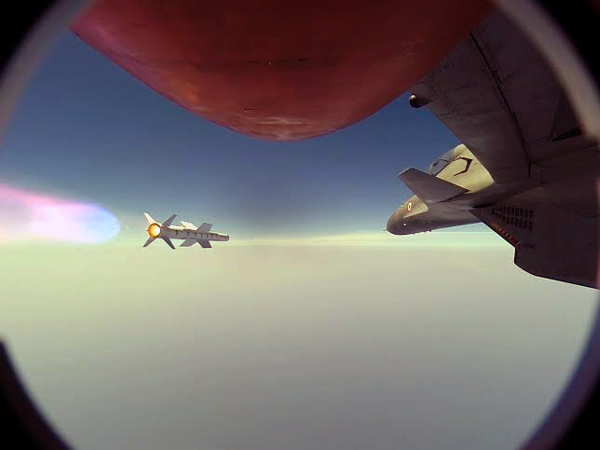|
Conducted from a naval range in the western
sector, the test met all the mission objectives.
The Defence Research and Development Organisation
(DRDO), which has had several successes in the
country’s missile programme, described the
weapon as an “all-weather and highly advanced,
state of the art missile.”
In the coming trials, Astra would be fired at
actual targets – drones – and by end-2014,
its Mark II variant with a longer range will be
tested. It should take a couple of years to deploy,
although details were not divulged.
DRDO spokesman Dr Ravi Gupta said in a statement
that the air-launch was captured by side and forward
looking high speed cameras of the aircraft and
the missile’s separation from the platform
was exactly as per the simulation.
Indigenously designed and developed by DRDO,
Astra is India’s first BVR air-to-air missile.
It has the reliability of high Single Shot Kill
Probability (SSKP) factor, all weather capability
with active radar terminal guidance, excellent
Electronic Counter Counter Measuress (ECCM) features,
smokeless propulsion and effectiveness in multi-target
scenario.
Scientific Advisor to the Defence Minister and
DRDO chief, Dr Avinash Chander, congratulated
the Astra team for its “high competence and
tenacity to make such an event happen seamlessly.”
He observed: “Astra's successful launch
from the Su 30 combat aircraft is a major step
in missile aircraft integration. Extensive flight
testing that has preceded today’s air launch
was indeed a joint effort of DRDO and IAF. This
will be followed by launch against actual target
shortly. Many more trials are planned and will
be conducted to clear the launch envelope. Weapon
integration with ‘Tejas’ Light Combat
Aircraft will also be done in the near future.”

Dr VG Sekaran, Director General (MSS) who chaired
the Flight Readiness Review Committee along with
Mr S Som, Director, Defence Research and Development
Laboratory (DRDL), Mr P Venugopalan, former Director,
DRDL among others, said: “This is one of
the proud moments for DRDO and the entire country.”
Dr. K Tamilmani, Director General (Aeronautics)
who has overlooked the entire flight safety in
the programme, said that quality of integration
and performance is of high standards and there
was no doubt in the success of the launch. He
further added that this is the beginning of the
phase for demonstration of launch over a wide
air-launch envelope.
Astra Project Director Dr S Venugopal said that
“the Air Launch of Astra was perfect in all
respects and is a culmination of years of effort
by a very dedicated and competent team of the
Missile Complex, Hyderabad, CEMILAC and Indian
Air Force.
“HAL carried out the modification in Su-30
along with IAF specialists, and many Indian industries
have an important and enabling role in the production
of reliable avionics, propulsion system, materials,
airframe and software passing stringent airworthiness
requirements for the missile.”
The missiles have undergone rigorous testing
on Su '30 in the captive mode for avionics integration
and Seeker evaluation in 2013. The project has
thus reached the final stage of testing and evaluation,
and the Mk-II variant with higher range capability
is also planned to be tested by the end of 2014,
the DRDO statementr said.
|